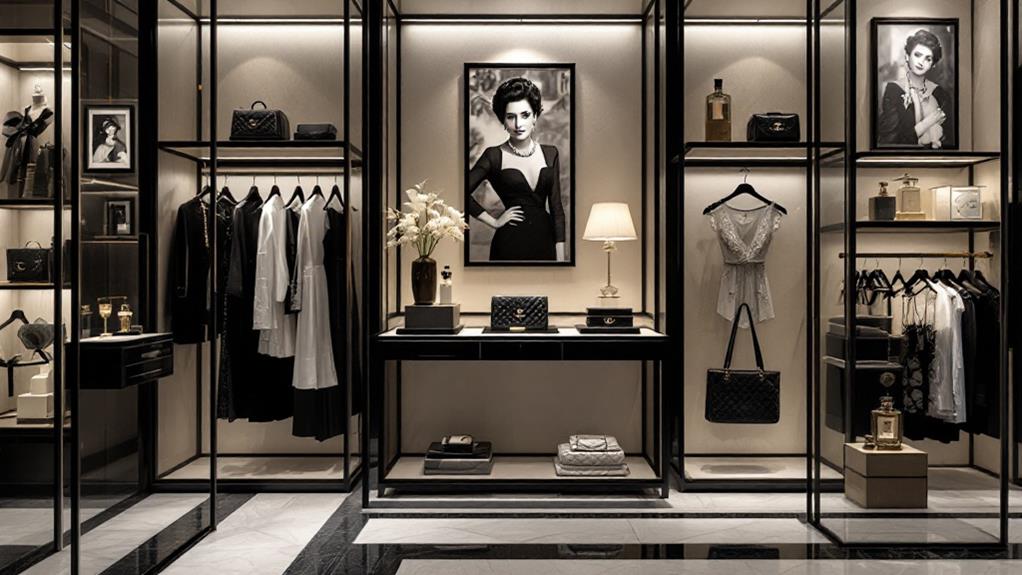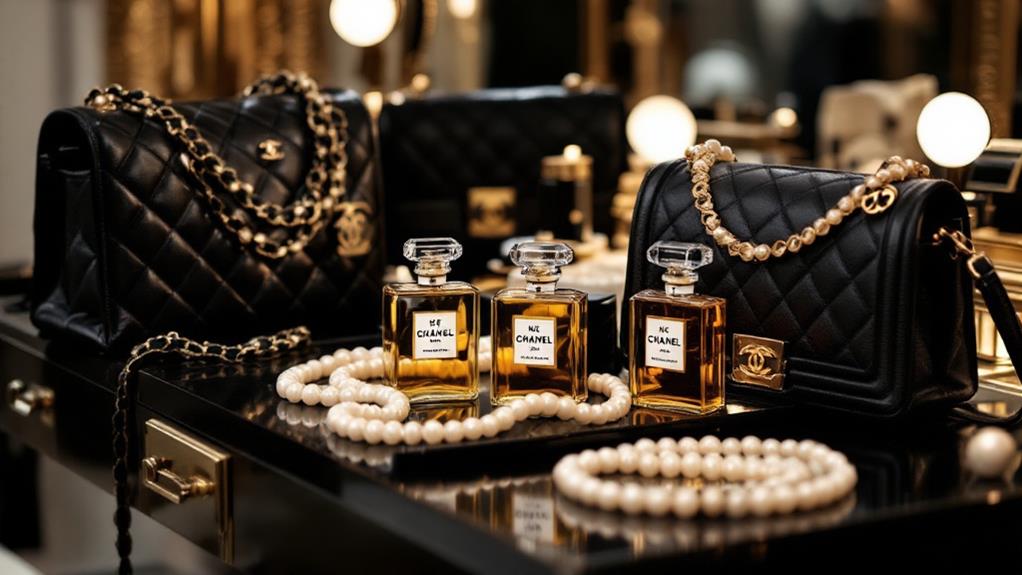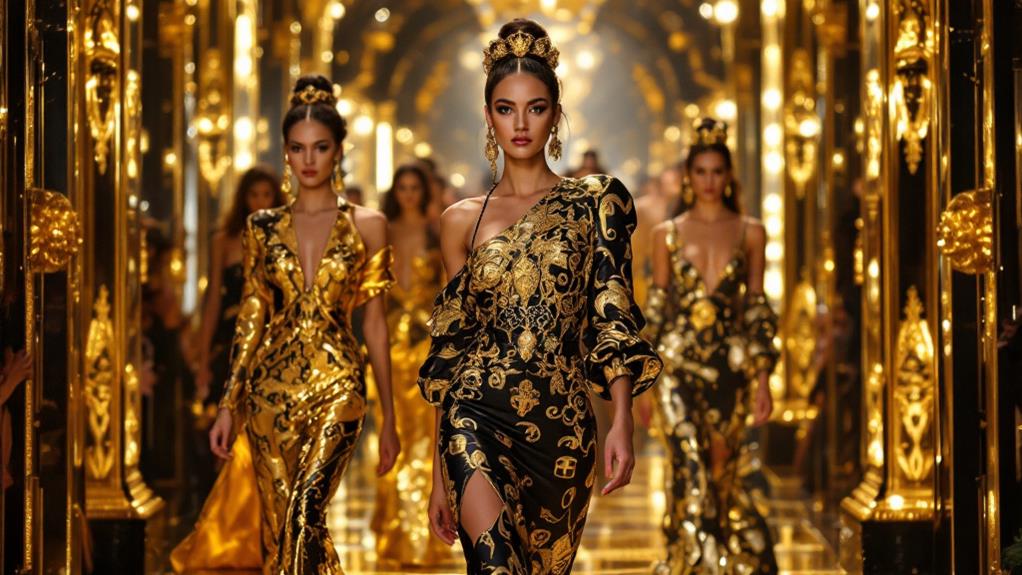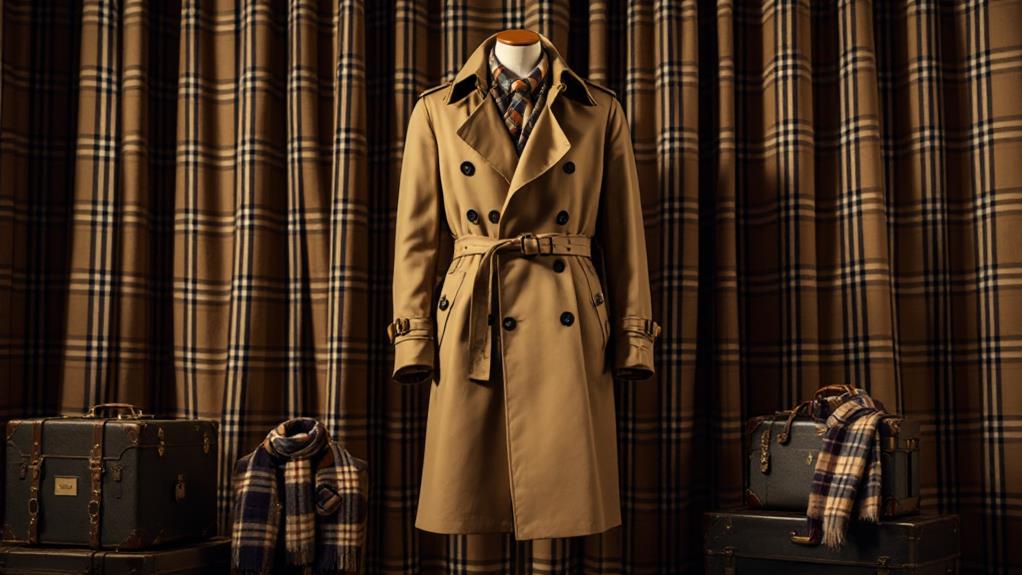Interesting Facts About Chanel: The Story Behind the Iconic Brand

You're about to uncover how Chanel, founded by Gabrielle "Coco" Chanel, became a guiding light of style and innovation. Born in 1883, Coco learned sewing at an orphanage before reshaping the fashion world. She introduced iconic pieces like the little black dress and the 2.55 handbag, combining comfort and timeless elegance. Her perfumes, especially Chanel No. 5, changed the fragrance industry with its designer identity. The brand's enduring craftsmanship strikes a balance between artistry and modern trends. Chanel's cultural impact is profound, extending into sustainability and beyond. There's so much more to investigate about this iconic brand's expedition.
Coco Chanel's Early Life
Coco Chanel's early life was marked by hardship and resilience. Born Gabrielle Chanel in 1883 in Saumur, France, she faced adversity from a young moment. When she was just 12, her mother passed away, which led to her being sent to an orphanage run by nuns. This challenging environment became the unlikely foundation for her future in fashion. At the orphanage, Gabrielle learned to sew under the watchful eyes of the nuns, a skill that would eventually transform her destiny.
The austere uniforms of the nuns and the intricate beauty of the convent's stained glass subtly influenced her early designs. Despite the strictness of her surroundings, Chanel's resilience shone through. She adopted the nickname "Coco" during a brief stint as a singer, a moniker that would become synonymous with her revolutionary fashion brand.
Chanel's determination to forge her own path was captured in her famous quote, "My life didn't please me, so I created my life." This statement speaks volumes about her ability to take control of her destiny and create a life beyond the limitations of her early experiences. Her resilience and creativity have left an indelible mark on the world of fashion.
Revolutionary Fashion Designs
In the world of fashion, Chanel's designs stand out as groundbreaking creations that redefined women's clothing. Coco Chanel opened new possibilities by introducing comfort and simplicity into high fashion. She freed women from the confines of corsets, favoring loose trousers and jersey dresses. This shift was revolutionary, emphasizing ease of movement and a casual elegance that was previously unheard of in haute couture.
The little black dress, launched in 1926, became an icon of versatility and practicality, akin to the Model T in its universal appeal. Chanel's innovation didn't stop there; she transformed the traditionally masculine tweed suit into a feminine staple, reflecting her connections with male aristocrats and their influence on her style. Her designs offered a blend of luxury and functionality that resonated with women worldwide.
Chanel's signature quilting came to life with the 2.55 handbag in 1955, combining style with practicality through its quilted design and chain strap. This innovation made the handbag a must-have. While Chanel's initial boutique and initial fragrance were crucial, her fashion designs truly cemented her legacy, creating timeless pieces that continue to influence the industry today.
Iconic Perfumes and Accessories

Among Chanel's many contributions to the fashion world, its iconic perfumes and accessories stand out for their timeless appeal and creativity. Chanel No. 5, launched in 1921, was revolutionary as the initial perfume to bear a designer's name. It remains a timeless classic and one of the best-selling fragrances globally, symbolizing luxury and sophistication.
Accessories have always been at the heart of Chanel's offerings. Take the 2.55 handbag, introduced in February 1955, for instance. With its quilted leather design and distinctive mademoiselle lock, it's a highly sought-after luxury accessory that continues to captivate fashion enthusiasts. The camellia motif, which debuted in 1933, has become a prominent symbol of elegance and femininity, appearing throughout Chanel's collections.
Chanel's creative approach extends to footwear with the introduction of the two-tone pumps in 1957. These shoes visually lengthen the leg, making them a fashion staple cherished by women worldwide. The brand's dedication to originality is further evident in unique items like a $2,300 basketball, part of its 2019 collection. Chanel's ability to blend timeless elegance with modern creativity guarantees its place at the forefront of fashion.
Legacy of Craftsmanship
Celebrating its legacy of craftsmanship, Chanel remains a guiding light of quality and artistry in the fashion industry. You can see this dedication in its long-standing relationships with top artisans. Collaborations with renowned embroiderers like Lesage and skilled milliners have been part of Chanel's story for over a century. Each piece crafted by these artisans reflects Chanel's commitment to quality and bespoke workmanship, even as the fashion world leans toward automation.
The iconic Chanel 2.55 handbag, launched in 1955, epitomizes this attention to detail and functionality in design. Made by 6 to 15 artisans, it features seven pockets, showcasing precise craftsmanship and the brand's luxury appeal. Chanel's dedication doesn't stop there. The camellia motif, a signature element since the 1960s, is intricately crafted by Lemarié, highlighting the brand's devotion to artisanal excellence.
Cultural and Market Impact

Chanel's commitment to craftsmanship doesn't just improve its products; it profoundly shapes cultural and market landscapes worldwide. As a luxury fashion house, Chanel sets the bar high with iconic products like Chanel No. 5 and the Little Black Dress. These items have redefined fashion standards and continue to be best-sellers, influencing consumer preferences across the globe. Their timeless appeal underscores Chanel's enduring cultural impact, making them symbols of empowerment and elegance.
The brand's handbags, particularly the 2.55, are not just accessories; they're investment pieces. Their consistent top placements in auction sales highlight a strong collector interest, setting benchmarks for luxury items in the market. This collector interest contributes greatly to Chanel's financial growth, with revenue reaching approximately $1.79 billion. Such financial success cements its solid presence in the luxury fashion sector.
Beyond fashion, Chanel inspires films, stage productions, and literature, further solidifying its cultural impact. Moreover, the brand's recent focus on sustainable practices, like committing to 100% renewable energy sources by 2025, aligns with changing consumer values towards ethical practices. Chanel's initiatives reflect a forward-thinking approach, ensuring its legacy continues to thrive.
Personal Symbols in Designs
In Coco Chanel's world of design, personal symbols played a crucial role, adding depth and individuality to her creations. When you investigate the iconic designs of Chanel, you'll notice the camellia flower, which became a signature motif. It symbolizes elegance and ties back to Chanel's personal history. Another intriguing element is the number five, her lucky number. This belief in the number's significance led to the naming of her timeless fragrance, Chanel No. 5, launched on May 5, 1921.
Chanel's designs didn't stop there—she welcomed other symbols reflecting her superstitions and personal beliefs. The wheatsheaf and four-leaf clover found their way into her collections, believed to bring good fortune. Her zodiac sign, Leo, added a fierce touch with the lion motif, showcasing her astrological identity and strength. Each design element spoke to her inner world and the empowerment and independence she championed for women.
In the fashion houses of Chanel, these personal symbols weren't mere adornments; they were expressions of Coco Chanel's unique vision. Her designs became synonymous with a powerful blend of personal belief and trailblazing style, leaving a lasting legacy.




